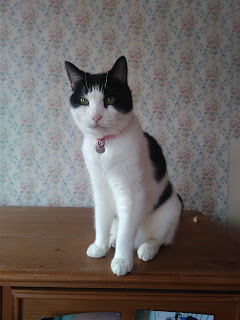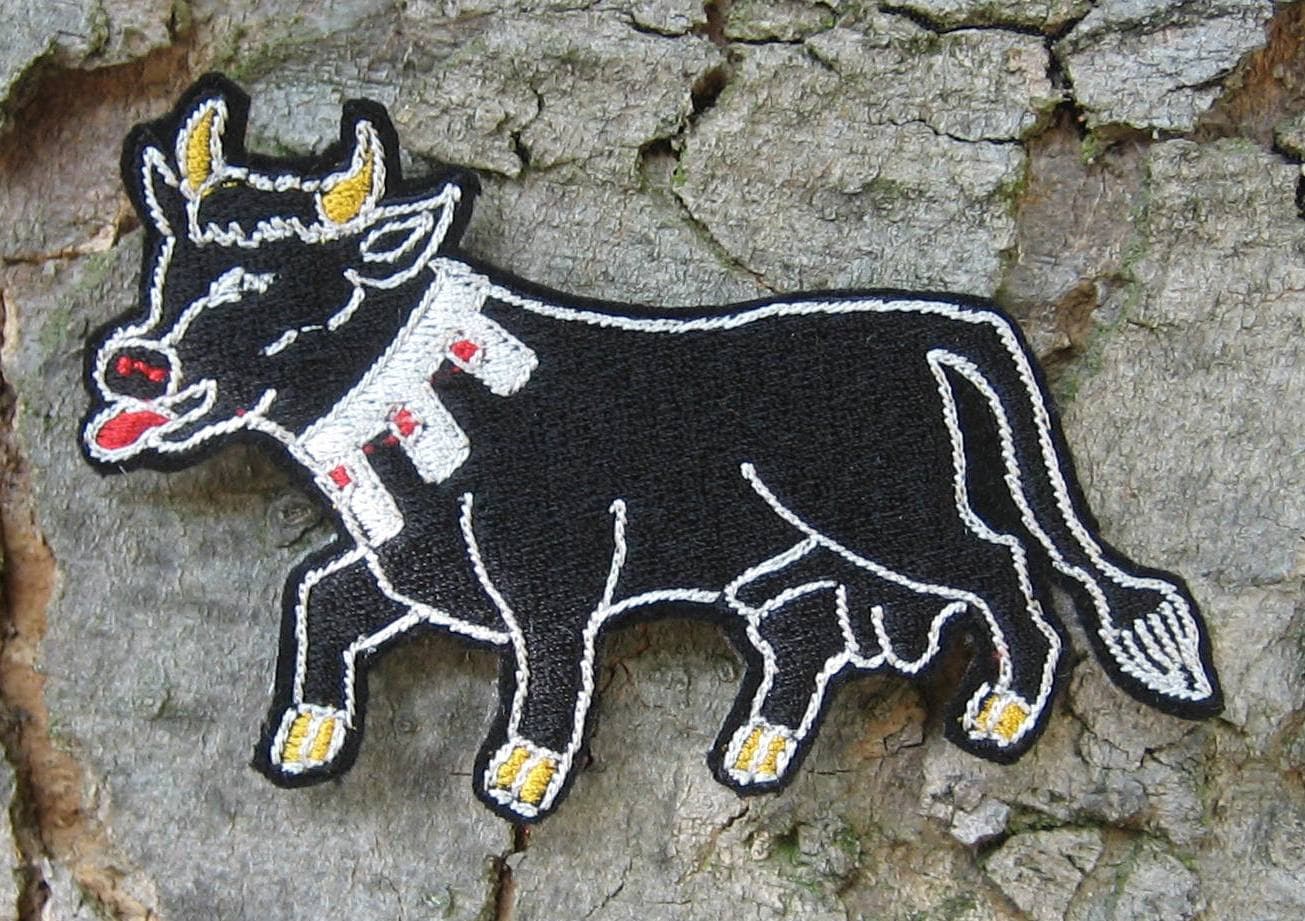Part
two of the food we made at Richmond Castle
Garlic
Soup
The
herbs are all fresh, but if you can't get the fresh herbs you can use
dried. The olive oil can be extra virgin, but as it's for
frying, I wouldn't worry about it too much - you could also use a
rapeseed or sunflower oil.
The carrots I use are heritage
varieties (depending on what it available - coloured varieties that
taste very slightly different from normal carrots), but you can use
just normal carrots.
The vegetable stock is from stock cubes or
stock pots, but absolutely use fresh or home-made if you prefer.
Garlic,
sliced
Shallots, finely chopped
Carrots
Double
cream
Vegetable stock
Parsley, chopped
Thyme, chopped
Sea
salt
Olive oil
Pan
roast the garlic in olive oil, add the onions to brown slightly.
Put
vegetable stock in a pot, and add the garlic, onions and carrots.
Cook till tender.
Season
to taste and add the herbs. Add the cream, and check the seasoning.
Pea
Salad
The
tins and frozen peas and beans are what I'm using at the event - any
combination of fresh, frozen or tinned is fine, just make sure
they're cooked to tender and cooled before you start.
The peas
should be more petit pois kind if you can get them, because medieval
people would have had the smaller 'field peas' not the modern
marrowfat peas we have now.
When mixing the oil and vinegar, you
want about three parts oil to one part vinegar.
I like to use
Aspall's vinegar, because it's vegan, and I don't have to worry about
sulphites (which is an allergen in most vinegars). Also, it's
just better than most. You can also use verjus in place of the
vinegar.
Tinned
chick peas, drained
Frozen broad beans, defrosted
Tinned peas,
drained
Fresh mint, chopped
Fresh chives, chopped
Fresh
parsley, chopped
Olive oil
Cider vinegar
Sea salt
Black
pepper
Drain
and rinse the tinned veg.
Check whether the broad beans need
to be cooked, if so, pre cook till tender and allow to cool.
Slightly
squash the chickpeas and beans (not too much, we're going for
different textures, not hummus).
Chop
the herbs and mix into the beans. (I use my hands, a spoon is also
ok.)
Sprinkle
over salt and pepper to taste.
Mix
together the oil and vinegar and sprinkle over.
Pancakes
These
are not pancakes in the sense we mean in Britain (like crepes).
They're also not pancakes in the sense they mean in America (they're
basically drop scones).
The closest thing to these pancakes that
we have today is doughnuts. If you've ever had fresh doughnuts
from a van - that's what these are like.
This recipe does have
quantities on it, which I use as a rough guide. You can
increase or decrease the amount as you wish, as long as you keep the
ratio broadly the same.
We have a coeliac, as I
mentioned earlier, so I'm using gluten free flour - normal plain
flour is fine too (plain because it's the yeast that does the work).
If using wheat, you can leave out the xanthan gum.
The
yeast I use is Allinson's Easy Bake dried yeast, because it's both
really simple to use, and it's gluten free.
When I say 'deep fry',
I don't use a deep fat fryer, I use a frying pan, but I do make sure
there's a good pool of oil about 1-1.5cm deep.
Milk
(750ml)
Yeast (1 tsp)
Egg whites (x6)
Plain flour
(420g)
(Xanthan gum (1 tsp) - omit if not using gluten free
flour)
Vegetable oil (something neutral with a highish smoke
point, so rapeseed, or sunflower, etc)
Sugar
Salt
Warm
the milk slightly and dissolve the yeast into it.
Beat
the egg whites, then mix the egg whites and the flour. (If
using the xanthan gum, add it to the flour.)
Add
the yeast and milk to the mix a little at a time, beating till
smooth.
'Deep fry' a dollop at a time, turn when lightly
browned, and then drain. (NB - they do not need to be perfect
rounds - stray strands will crisp up nicely, just be sure to remove
any burned bits.)
Sprinkle with a little sugar and some salt.
Elder
sauce
This
is a really easy fruit sauce.
I use foraged elderberries and
blackberries.
The blueberries are pretending to be our
native British bilberries (or blaeberries), which are not grown
commercially (I don't have any growing near me, so I can't forage
them). They're so closely related that they're effectively the
same plant, but blaeberries are a bit smaller.
But the cool
part about this fruit sauce is that you can use any fruit you want -
I've even made it with apples and pears.
You can also use as much
or as little of the sugar or honey as you like.
Elderberries
Blackberries
Blueberries
(pretending to be blaeberries)
Brown sugar (or honey)
Water
(Sea
salt)
Put
the fruit in a small pan, with enough water to cover, and some sugar,
to taste (or you can use honey).
Bring to the boil and
simmer till the fruit cooks down to a jammy consistency - add water
if it boils dry, and give it a good mix every now and then.
Shortly
before it's ready, check the flavour, and add more sugar / honey if
it needs it, and a small pinch of salt.
Disclaimers -
If
you're going to pick the yourself, make absolutely sure you know what
you have before you eat it. Check with multiple sources, books,
websites (ideally not apps), Facebook groups, etc.
Elderberries
must be cooked before being eaten, because of the amygdalin that may
be present that can convert to cyanide in your gut (cooking
neutralises it). Don't be scared by the word 'cyanide' - it's
the same chemical present in apple seeds.
If you're pregnant
or breastfeeding, skip the elderberries - there's no evidence that
they're harmful, but equally no evidence that they're safe
either.
Likewise, if you have any gastro-intestinal issues, best
avoid, just to be safe.
And check drug interaction if you're
taking medications - it's known that it can make certain drugs less
effective.
Avoid if you have severe hayfever or allergic
rhinitis.
Finally, I'm in the UK, where all our Elder trees
are Sambucus Nigra, or the European Elder, and all are edible.
There are closely related members of the Sambucus family of plants in
other parts of the world that have fruits that are toxic. Make
sure you know what you have before you consume it.
Pears
in Brandy
Another
simple one that's basically just a one pot simmer everything together
dish.
Be aware, there may be alcohol in this dish after
cooking (the brandy).
Pears, peeled, cored, and
quartered
Water
Brandy
Honey
Brown sugar
Galangal
paste
Cinnamon, ground
Cloves, ground
Sea salt
Cook
the pears in water, a little brandy and a very little sugar or
honey.
Keep an eye on them, and if they boil dry before
they're tender, top it up.
Once the pears are cooked to
tender, remove them and set them aside.
Mix the honey,
remaining brandy, and spices in another pot, and heat into a syrup -
allow it to boil.
Serve
with the sauce poured over the pears, and sprinkle a very little sea
salt.
Prince
Biskit
A
simple medieval biscuit. The original recipe says that the
ingredients should be beaten together for one hour - it can be done
in a food processor in a modern kitchen - just keep going till it
won't mix any more.
I've included the xanthan gum in the recipe,
which I've added because I'm using gluten free flour. If you
use normal wheat flour, this isn't needed.
Plain flour
(500g)
Brown sugar (500g)
5 eggs
Caraway seeds (approx 6
table spoonsful)
Rosewater (approx 2 tablespoonsful)
(Xanthan
gum, 1 teaspoon)
Beat
together the ingredients.
Put spoonsful onto a baking sheet
(spread out in case they spread)
Bake for 15 - 25 minutes at
160C.
Dandelion
and Burdock
Dandelion and burdock has a much
longer history than most people realise. It started out as a
fresh kind of mead. That is, it was made and drunk within a
couple of weeks, not left to mature and build the alcohol
content.
This recipe may contain a little alcohol, because the
alcohol is a by-product of the fermentation of the yeast, but it
won't be that high. If you want to know exactly how much you
end up with, you can test it using a hydrometer and do the
calculations to figure it out.
I use bottled mineral water to make
this, but you can use ordinary tap water that's been left for a few
days to allow any chlorine to evaporate (it won't work with
chlorinated water, because the chlorine will kill the microbes).
The
honey I use is Rowse brand ordinary runny honey, and their 'Dark and
Rich' honey.
If you can't get fresh dandelion and burdock roots
(and remember, if picking your own, be 100% certain it is what you
think it is), you can buy dried, cut roots online - the burdock is
often sold as 'burdock tea', and the dandelion as 'dandelion
coffee'. Just make sure it's only the root with nothing added.
The
yeast I use is nothing special - ordinary Allinson's easy bake dried
yeast. It's gluten free, so I know I'm safe. Any bread,
beer or champagne yeast will do the job though.
4L water
Honey
(approx 680g)
Burdock root, 150g
Dandelion root, 50g
Juice
of one small lime
2.5 teaspoons dry yeast
Put
the water in a large pan, with the dandelion root and the burdock
root. Bring to the boil and let it simmer for at least half an
hour (steeping it longer will just increase the strength, like a
tea).
Take it off the heat and allow it to cool.
Take a
few spoonsful of the dandelion and burdock tea, and add it into the
honey to make the honey more liquid and easier to mix in, then add it
to the pan. Add the lime juice too.
Strain the liquid
into another big pan, or fermenting pot, so you get rid of all the
bits of dandelion and burdock (they can now be discarded).
Mix
the dried yeast with a little warm (just above skin temperature)
water, and let it stand for 10-15 minutes. When it's started to
foam, add it all into the pot, and mix it in.
Cover the pot
loosely, and let it stand - ideally for a few days, but over night as
a minimum.
Then you can decant it into bottles.
NB
- when you decant it, do NOT tighten the lid.
Ordinary bottles are fine (I clean then reuse the plastic water
bottles that the water came in), but the yeast is still active, so if
you tighten the lid, the bottle may explode. The same goes for
any bottle or container that does not have an air release cap on
it.
Check the bottle twice a day for the next week or
so. It will be ready to drink in a week or two.
(Note as
this is a fresh mead, it is not be left to mature - as a result, the
mead may still be cloudy after a week or two. It won't have
time to clarify, which happens after the microbes in the yeast die
back, and the alcohol content increases. The mead may still be
cloudy. This is perfectly safe to drink, and will not do you
any harm - it's just the yeast in the mead.)



















.jpg)






.jpg)
.jpg)



.jpg)
.jpg)

